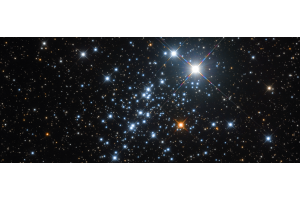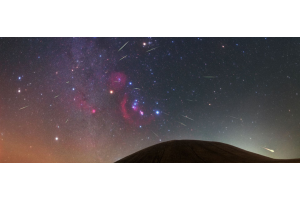constellations
Explore the enchanting territory of constellations! Imagine the night sky as a cosmic storybook full of mythical creatures and thrilling adventures. Beyond the twinkling lights, constellations have a rich history connecting us to ancient cultures and sparking our imagination. Embark on a celestial journey as we uncover the captivating stories behind these starry wonders.
The Cosmic Tapestry:
Constellations are like nature's own connect-the-dots, drawing patterns among the stars that have captured human attention for millennia. These patterns are not random; they result from our Earthly perspective, as stars at varying distances create the illusion of groupings. Early civilizations looked up and saw stars, figures, and animals that became the characters in their cosmic storytelling.

Navigating the Skies:
Constellations are more than twinkling lights; they're like space navigation signs. Before GPS, sailors used them as their cosmic GPS. Imagine the North Star, or Polaris, as a celestial compass in the northern sky – it stayed put, helping sailors figure out which way to go. The night sky was their map, and those starry patterns guided them on their ocean adventures.
Zodiac Constellations: Astrological Adventures:
Meet the zodiac – a unique bunch of constellations forming a line where the sun seems to travel. People often link them with astrology, but initially, they helped folks track the seasons. Aries to Pisces, each zodiac sign has its celestial vibe, shaping the personalities of those born under their cosmic influence. Even though science separates astrology from astronomy, these zodiac tales still sparkle in our culture.

Mythical Marvels:
Constellations are steeped in mythology, each telling a captivating story from various cultures worldwide. Take Orion, the mighty hunter whose starry silhouette dominates the winter sky. In ancient Greek stories, Orion, the great hunter in the sky, met his match with a scorpion from the Scorpius constellation. It's like a celestial showdown in the starry tales! This cosmic battle unfolds yearly as these constellations appear on opposite sides of the sky, marking the changing seasons.
The Pleiades: Celestial Siblings:
Meet the Pleiades, also known as the Seven Sisters – a group of stars hanging out in the Taurus constellation. It's like a cosmic family reunion up there! In Greek mythology, the Pleiades were seven sisters transformed into stars to escape the pursuit of Orion. This cluster is visible to the naked eye, and its appearance in the night sky has inspired diverse cultural stories, from Indigenous Australian Dreamtime tales to Japanese folklore.
Modern Marvels: Hubble's Gaze:
While ancient civilizations imagined constellations from Earth, modern astronomy has taken us beyond our planet's atmosphere. Think of telescopes like the Hubble Space Telescope as cosmic photographers. They snap stunning pictures of faraway galaxies, beautiful nebulae, and gatherings of stars – it's like capturing the universe's most fabulous selfies! While not forming traditional constellations, these cosmic wonders continue to fuel our fascination with the vastness of the universe.

Constellations aren't just shiny dots at night; they're cosmic storytellers, spinning tales that link us to history and spark our curiosity. It's like the universe's own bedtime stories! Whether used for navigation, influencing astrological beliefs, or as characters in mythical sagas, constellations are integral to our cultural and astronomical heritage. So, the next time you gaze up at the stars, remember that you're not just observing pinpricks of light – you're witnessing the timeless narratives etched across the celestial canvas, inviting you to join the cosmic storytime.






